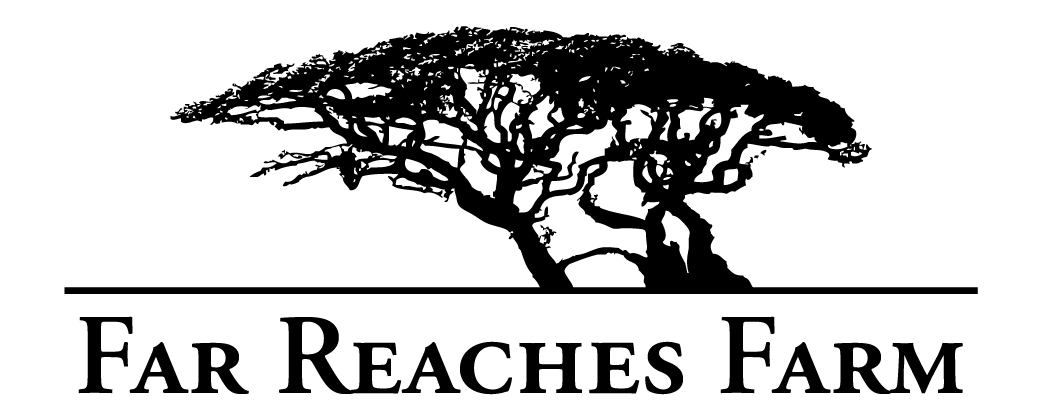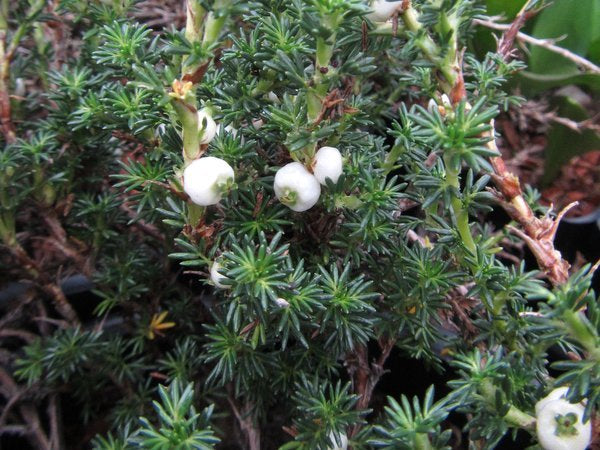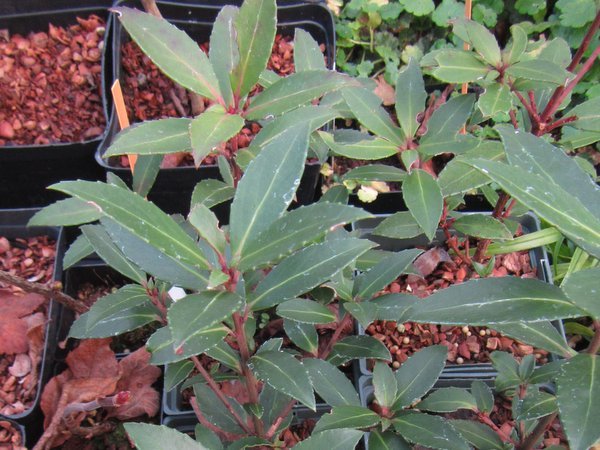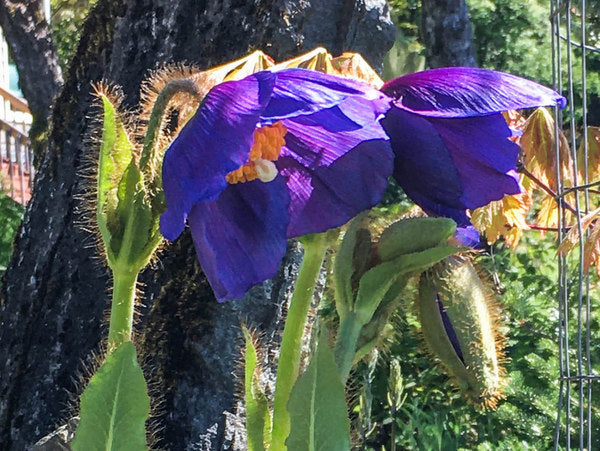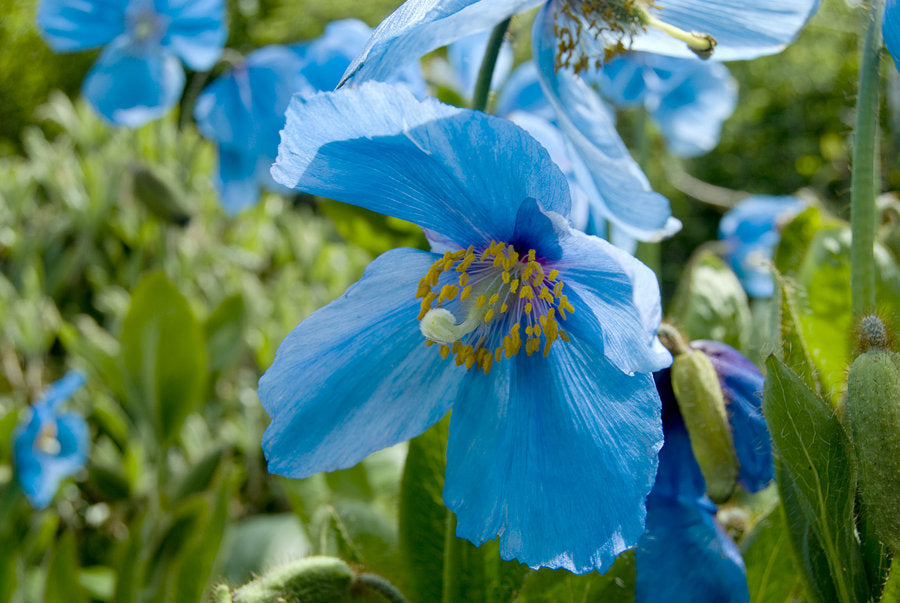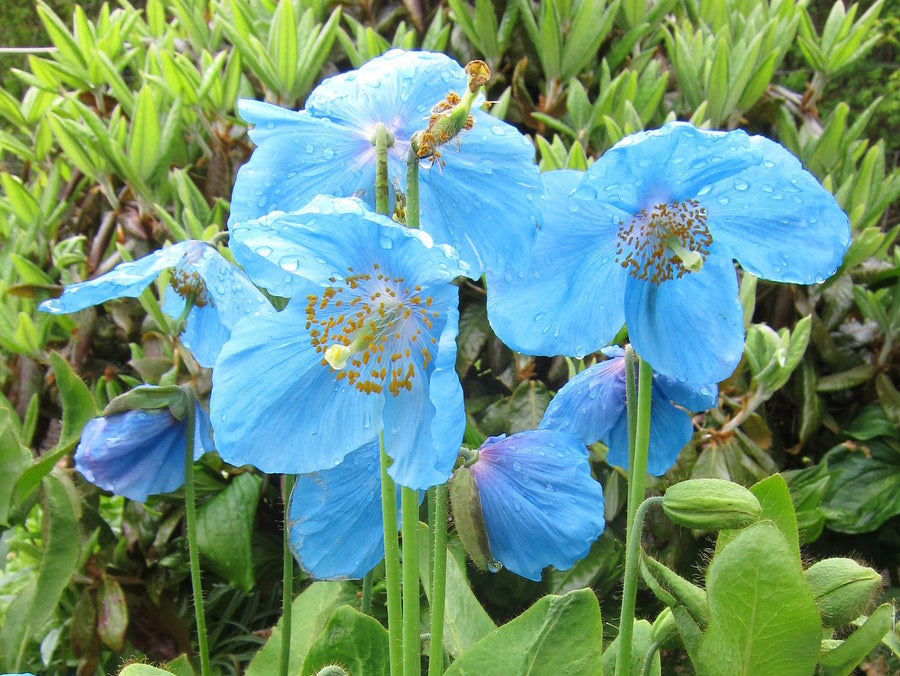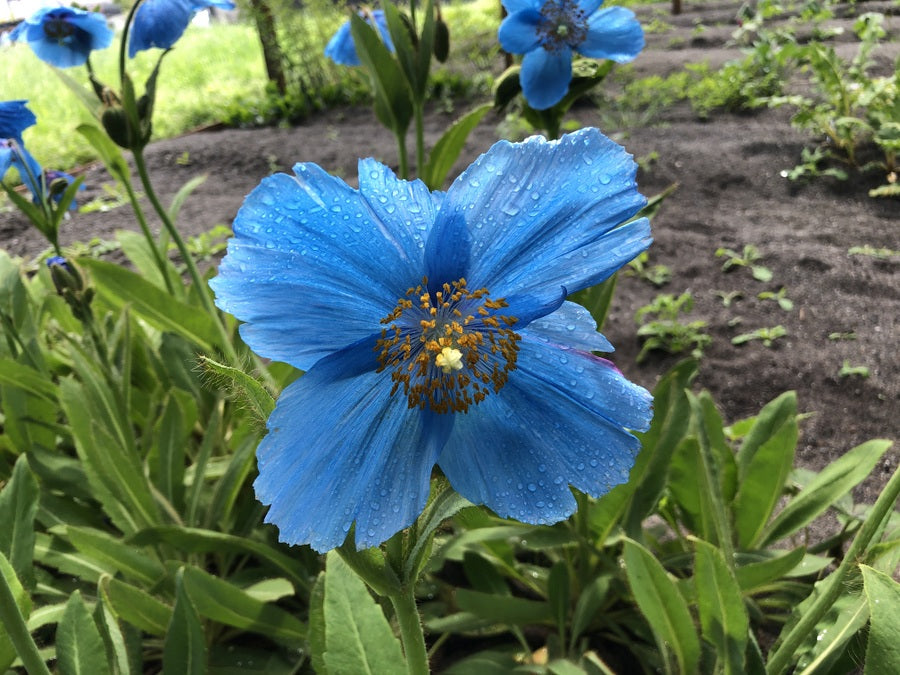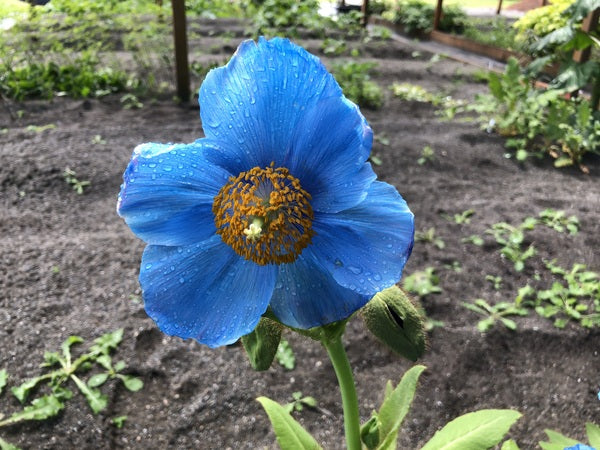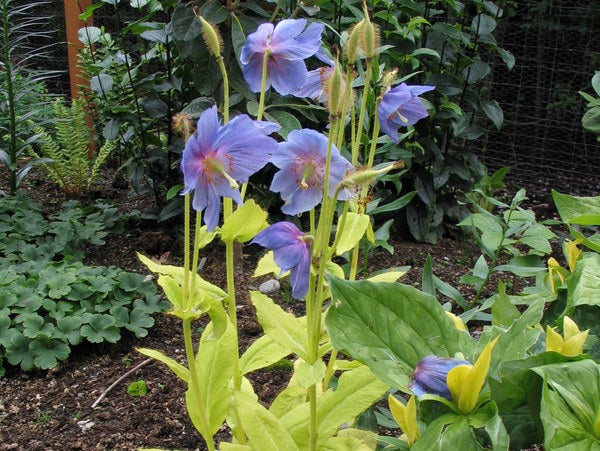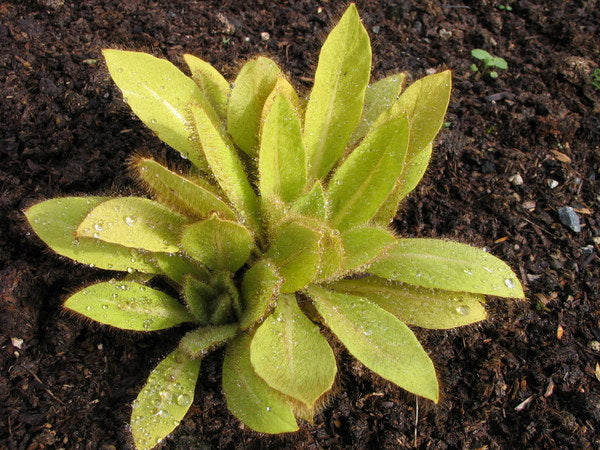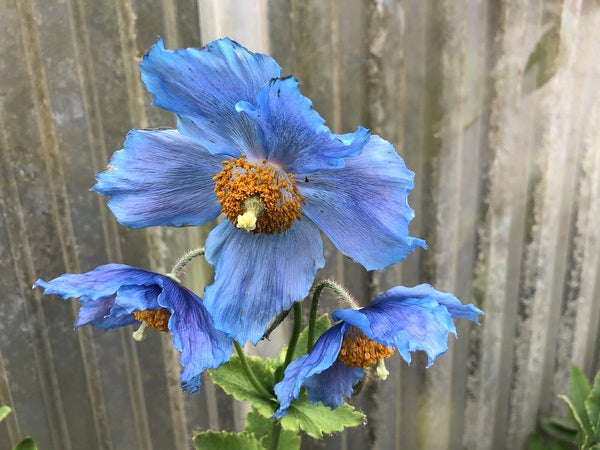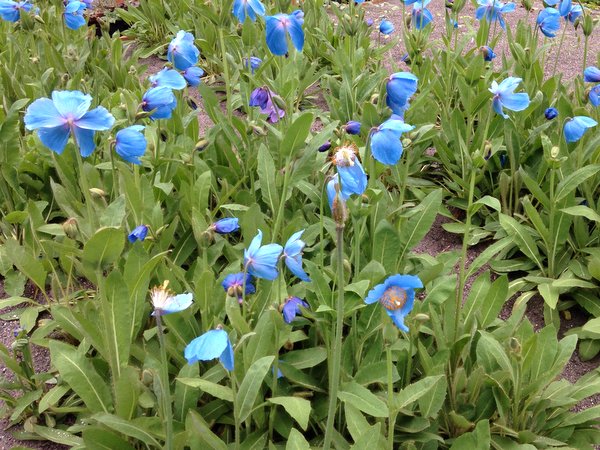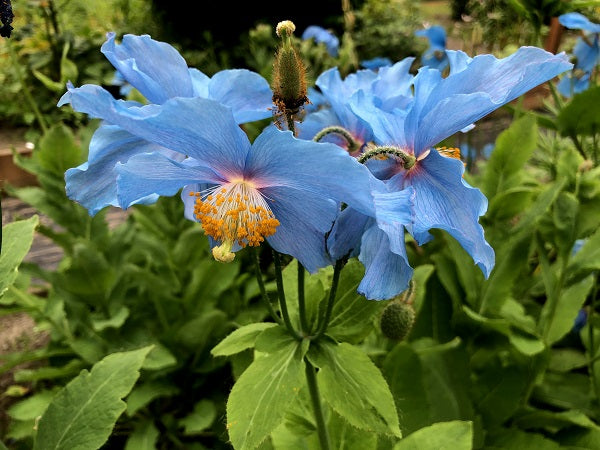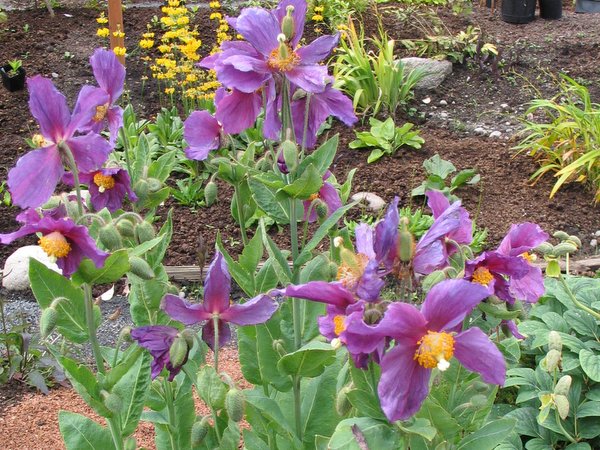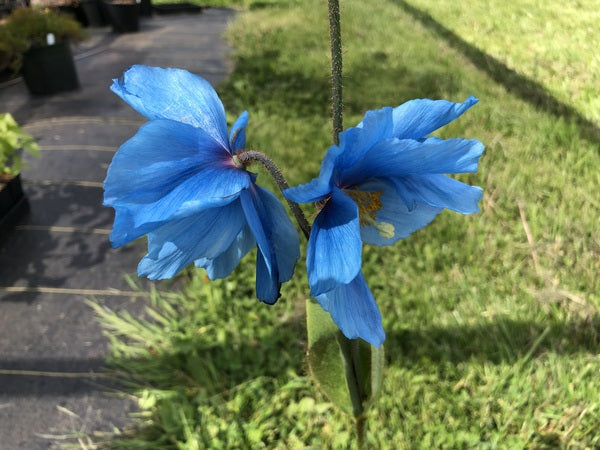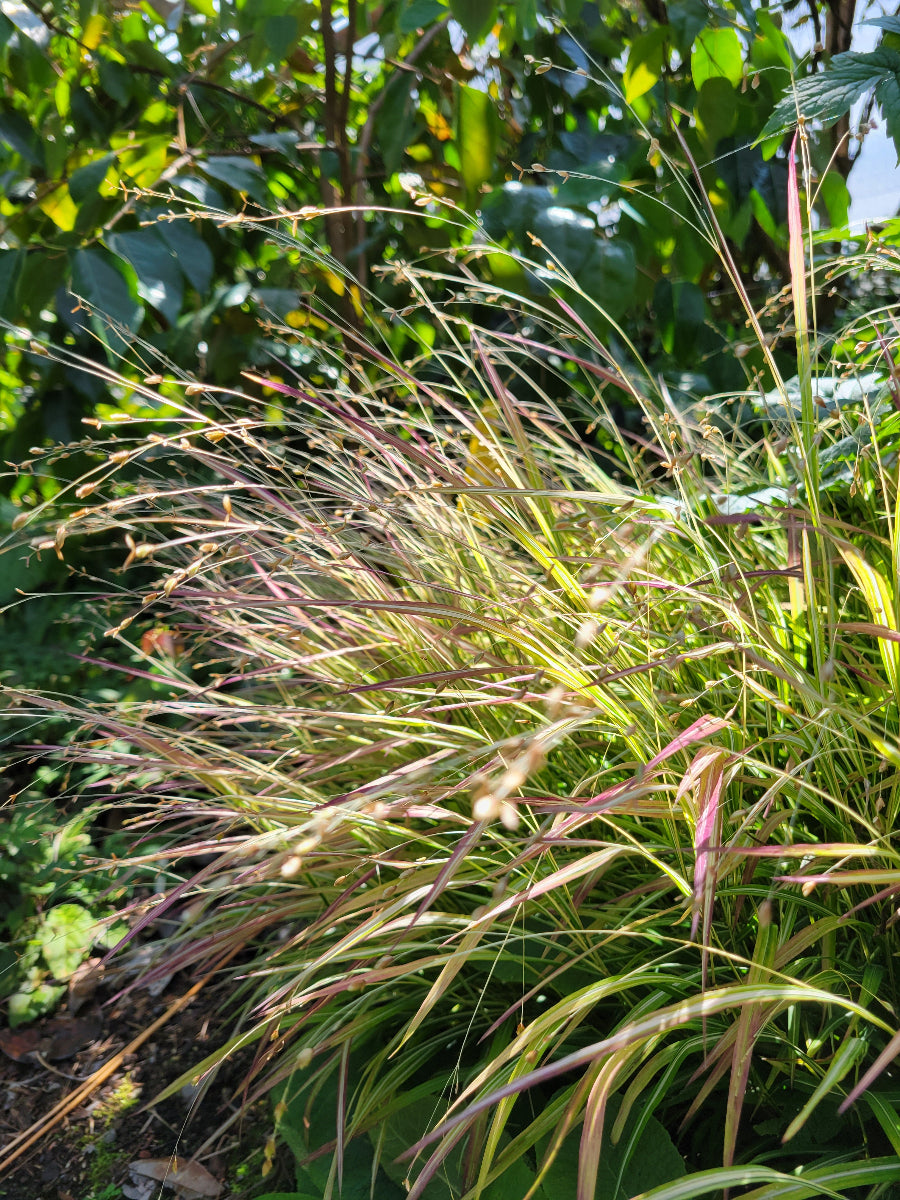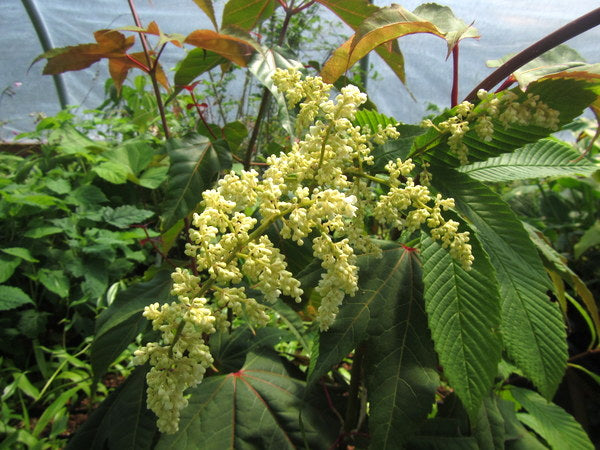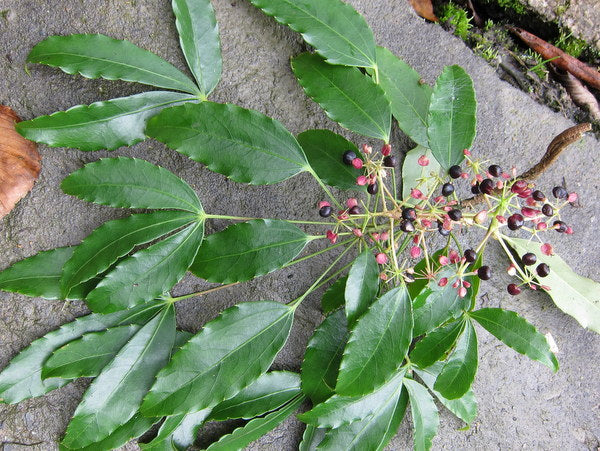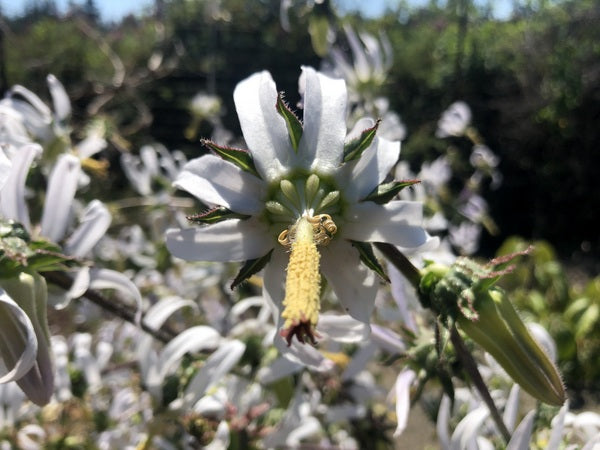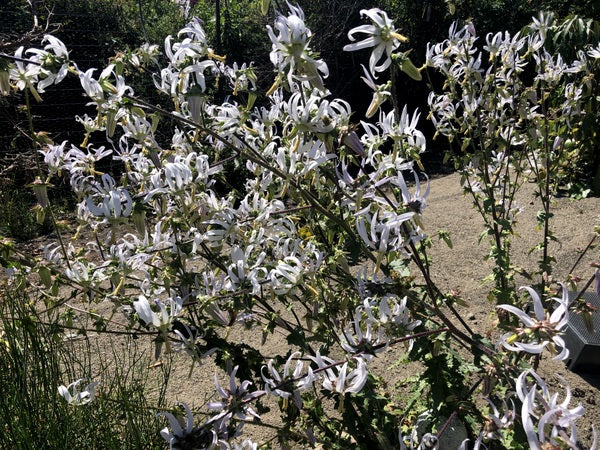Sort by:
1775 products
1775 products
Himalayan Blue Poppy. Few plants capture the imagination and fire a lust to possess to the extent this fabled perennial does. Our 'Lingholm' strain is one of the best of the Blue Poppies and certainly one of the most reliably perennial. We never tire of seeing this in bloom with its large flowers of a good medium blue or of hearing the exclamations of delighted wonder from gardeners of every skill level. There is something about this that is magic and our sympathies if you live where this cannot be grown which is about anywhere it gets hot and/or humid in the summer.
This Meconopsis is not an Oriental Poppy. Forget we said the word 'Poppy' because everything that makes an Oriental Poppy happy will surely kill this aristocrat. Think cool. moist, part shade, what is going to make my Primrose happy? and you will be on the right track. This is going to be difficult south of northern New England unless you have a cool microclimate. Forget about Kansas although we have heard good reports from higher elevation in Colorado. We've seen the parent species of this hybrid at 12000' in eastern Bhutan and 10000' in Yunnan both in stable moss-covered boulder slopes which never dry. This appreciates a partly sunny to bright dappled shaded position with good loose organic soil that drains yet doesn't dry out. Acid soil and it doesn't like heat and it does need a winter so it can go dormant.
A small percentage will bloom and die - that is just the roll of the Blue Poppy dice and part of the mystique. This strain is much less prone to that plus you have viable seed with which you can start new ones if that does happen. That said, the 'Lingholm' selection in general cultivation has been so diluted by generations of seed-sowing that the Royal Horticultural Society is calling this strain Meconopsis Fertile Blue Group to denote that it is a tall blue flower producing fertile seeds. But what really matters is that these have no peers as there is truly nothing to compare. Young, sturdy plants which will establish very nicely in the garden.
The all but unseen in the U.S. variegated form of one of the supreme small ornamental grasses. Retains the string-of-pearls white flowers while transforming the blades into an unmatchable pastel rainbow that on closer inspection betrays its elegant components of green blades with a white central stripe tipped by a purplish-pink. Its rare that a grass can reach the sublime but I think its fair to say this one does.
We have not keyed this Chinese species yet but it is on the docket. This was a small tree growing in bamboo and mixed forest at good elevation. The leaves are glossy and attractive but the almost lilac-like heads of white honey-scented flowers are the thing. Small shiny black fruit. A Far Reaches Botanical Conservancy Offering
